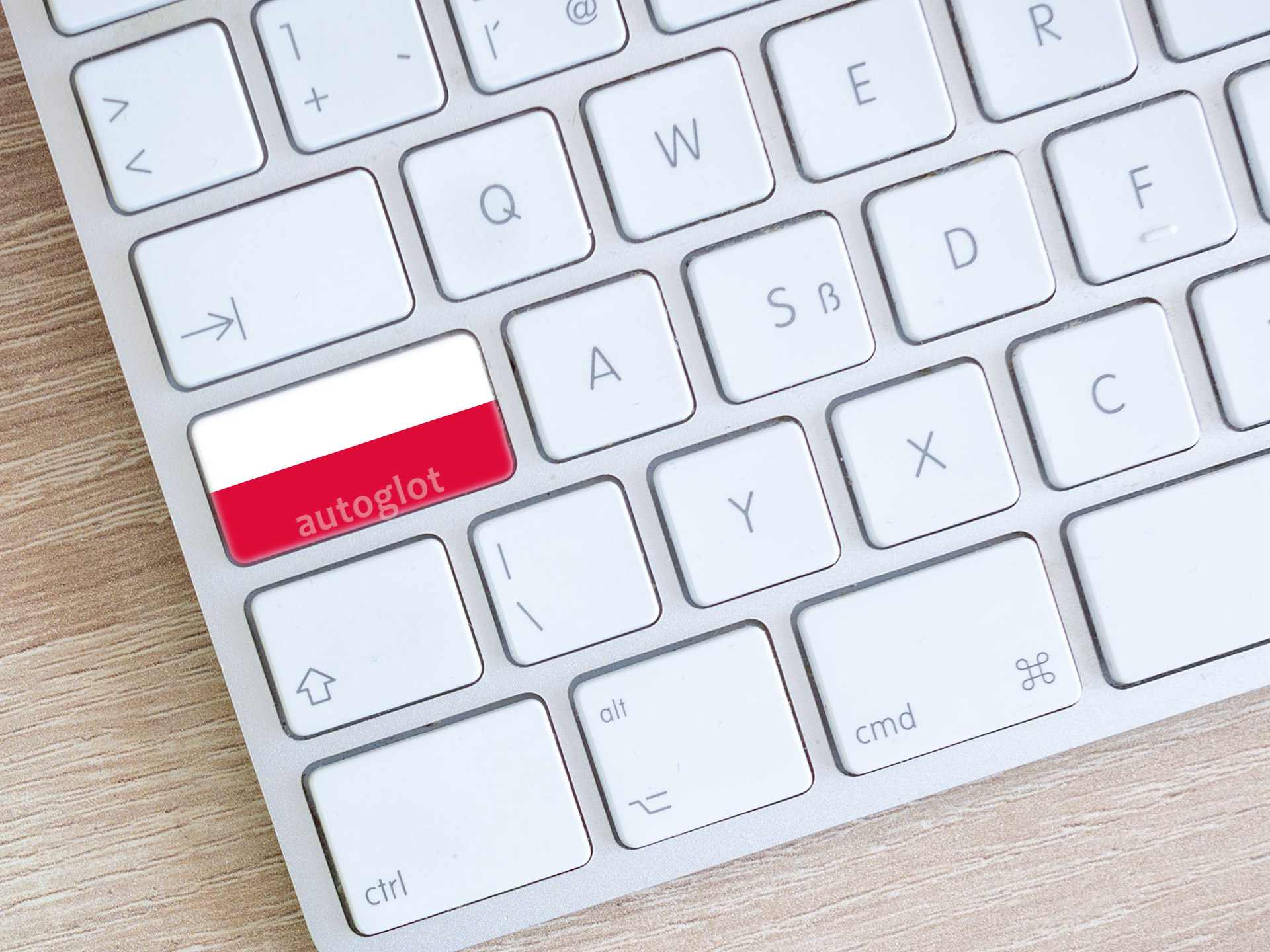
Multilingual websites have become indispensable in the digital landscape, opening doors to a global audience and fostering cross-cultural communication. Among the myriad of languages spoken worldwide, Polish holds a significant place. As businesses strive to expand their online presence, the importance of translation to Polish cannot be overstated.
This article reviews the benefits of having a multilingual website, with a focus on translating WordPress websites into Polish.
Unlocking Global Opportunities
In an interconnected world, a multilingual website acts as a gateway to diverse markets. With over 40 million speakers worldwide, Polish is a language that commands attention. By translating your website into Polish, you tap into a sizable audience, potentially reaching customers in Poland and beyond.
Building Trust and Credibility
Language is a powerful tool for building trust. When users encounter content in their native language, it resonates more deeply, establishing a connection that goes beyond mere words. For Polish-speaking audiences, a website in their language signifies a commitment to understanding and catering to their needs, fostering trust and credibility.
Enhancing User Experience
A seamless user experience is paramount for any website’s success. Offering content in Polish ensures that users can navigate your site effortlessly, making their journey enjoyable and comfortable. This user-centric approach can result in increased engagement and a higher likelihood of conversion.
Boosting SEO and Visibility
Search engines prioritize localized content, and having a Polish version of your website can significantly improve its search engine ranking among Polish-speaking audiences. This boost in visibility is crucial for attracting organic traffic and expanding your online footprint.
Polish Language: Culture and History
Basic Information about Polish Language
Polish, belonging to the West Slavic branch of the Indo-European language family, stands as the official language of Poland. Its linguistic roots trace back to the medieval Slavic languages, evolving over centuries to become a distinct and vibrant language. With its own unique script based on the Latin alphabet, Polish is a language that boasts a rich linguistic heritage.

History of Polish Language
The history of the Polish language is a fascinating journey through the annals of time. Shaped by influences from Latin, Czech, and Old Church Slavonic, Polish underwent significant transformations, particularly during the Middle Ages. The 16th century marked a pivotal moment with the publication of the first Polish grammar book by Jan Kochanowski, solidifying the language’s status and setting the stage for its continued evolution.
Ease of Learning, Speaking, and Understanding Polish
While every language presents its challenges, Polish is renowned for its logical structure and consistency once its grammatical rules are understood. Pronunciation might pose a hurdle for non-native speakers due to the presence of unique sounds, but with dedication, learning Polish becomes a rewarding endeavor. The language’s linguistic nuances contribute to its expressive nature, allowing speakers to convey intricate meanings with precision.
Structure, Vocabulary, and Grammar of Polish
Polish is characterized by its complex grammatical structure, featuring aspects such as grammatical gender, seven cases, and verb conjugations. The vocabulary draws from a mix of Slavic, Latin, and Germanic influences, reflecting Poland’s historical interactions with neighboring regions. The grammar, while challenging, provides a framework for clear and nuanced expression, making Polish a language of depth and sophistication.
Polish-Speaking People: A Global Community
Population that Speaks Polish
Polish, as the official language of Poland, is spoken by a substantial population both within and outside the country’s borders. With over 40 million native speakers, Polish stands as one of the most widely spoken Slavic languages. The Polish diaspora further extends the reach of the language, with communities of speakers residing in various corners of the world.

Polish-Speaking Countries
While Poland is the primary bastion of the Polish language, its influence extends beyond national borders. Polish-speaking communities thrive in countries with historical ties to Poland, such as the United States, Canada, the United Kingdom, and Australia. These communities contribute to the global tapestry of Polish speakers, fostering cultural exchange and preserving linguistic heritage.
Countries Where Polish is an Official Language
Polish enjoys the status of an official language solely in Poland, where it plays a pivotal role in the nation’s cultural, political, and social spheres. The linguistic identity ingrained in Polish society underscores the language’s significance in shaping the narrative of the country.
Countries Where People Speak Polish
The influence of the Polish language reverberates in various corners of the globe. Beyond official recognition, Polish is spoken by communities scattered across Europe, North America, and Australia. These pockets of linguistic diversity illustrate the resilience and adaptability of the Polish language, transcending geographical boundaries.
In recognizing the broad reach of Polish-speaking communities, the decision to translate your website into Polish emerges as a strategic move to connect with this global audience.
Source
Polish on the Internet: Navigating the Digital Frontier
How Widespread is Polish on the Internet?
In the expansive realm of the internet, the Polish language has carved out a notable presence. As of the latest statistics, a significant percentage of internet users prefer consuming content in their native language. Polish stands as the second most widely used language on the internet among Slavic languages, emphasizing the need for digital content that caters to the linguistic preferences of Polish-speaking audiences.

Why is it Important to Have a Polish Version of Your Website?
The importance of having a Polish version of your website extends beyond accommodating the linguistic needs of users. It is a strategic move to tap into a thriving online community and create a personalized user experience. A Polish website not only enhances user engagement but also boosts your website’s visibility on search engines, contributing to a more robust online presence.
Tailoring Content for a Diverse Audience
The internet is a melting pot of cultures and languages, and catering to this diversity is key for global outreach. By offering a Polish version of your website, you demonstrate a commitment to inclusivity and accessibility. This approach fosters a sense of connection with Polish-speaking users, positioning your brand or content as relatable and culturally sensitive.
Amplifying Your Digital Footprint
Search engine algorithms prioritize localized content, considering factors such as language and region. Incorporating Polish into your digital strategy can significantly improve your website’s search engine ranking among Polish-speaking audiences. This, in turn, enhances your digital footprint, drawing in organic traffic and expanding your online reach.
Tailoring your content to the linguistic preferences of your audience is a strategic move that reaps dividends in terms of engagement and visibility.
Source
How to Translate a WordPress Site to Polish: Harnessing the Power of Autoglot
Reviewing Major Ways of Translating WordPress Sites to Polish
Translating a WordPress site into Polish involves navigating various methods, each with its own set of considerations. While manual translation and third-party translation services are common approaches, they may require significant time and resources. An efficient alternative is the use of translation plugins, and among them, Autoglot stands out as a robust solution for automatic translation.

Autoglot WordPress Translation Plugin: A Game-Changer
Autoglot is a powerful translation plugin designed to simplify the process of making your WordPress site multilingual. What sets Autoglot apart is its ability to automatically translate your website’s content into Polish, eliminating the need for manual intervention. This not only saves time but also ensures consistency and accuracy in your Polish-language content.
Why Autoglot Stands Out
- Effortless Integration: Autoglot seamlessly integrates into your WordPress site, making it user-friendly for website owners, even those with limited technical expertise.
- Automated Translation: The plugin utilizes advanced machine translation algorithms, providing near-instant translations of your content into Polish. This feature is particularly advantageous for websites with dynamic and frequently updated content.
- Customization Options: Autoglot allows you to customize and fine-tune translations according to your preferences. This ensures that the translated content aligns with your brand voice and maintains accuracy.
- Continuous Updates: The Autoglot team continuously refines and updates their translation algorithms, ensuring that your website’s Polish content remains current and reflects the nuances of the language.
Making the Right Choice for Polish Translation
Choosing Autoglot as your WordPress translation plugin for Polish not only streamlines the translation process but also enhances the overall user experience.
Unlock the efficiency of automated translation and ensure your website resonates with the Polish-speaking audience in a way that is both accurate and culturally relevant.
Source
Step-by-Step Guide to Translating a WordPress Site to Polish with Autoglot
Step 1. Plugin Installation and Activation
- Begin building a multilingual WordPress site by installing the Autoglot plugin.
- Navigate to your WordPress dashboard, click on “Plugins,” then select “Add New.”
- Search for “Autoglot,” install the plugin, and activate it.
- This simple process sets the stage for transforming your website into a dynamic, Polish-friendly platform.
You may also download Autoglot directly from the official WordPress plugins repository.
Source
Step 2. Registration in Autoglot Control Panel
- Once activated, the next step is to register on the Autoglot Control Panel.
- Visit the Autoglot website, sign up for an account, and access the control panel.
- Registration is straightforward and allows you to manage your translations efficiently.
Autoglot Control Panel lets you control your translation expenses, track usage and order new translation packages.
Source
Step 3. Plugin Configuration
- Return to your WordPress dashboard and access the Autoglot settings.
- Here, you’ll configure the plugin to align with your website’s specific needs.
- This includes language switcher, media and links replacement, and adjusting any other preferences to ensure a seamless integration with your existing content.
Step 4. Choosing Polish Among Languages
- Autoglot supports a wide array of languages, and in this case, you’ll be selecting Polish as the target language for translation.
- The plugin’s intuitive interface makes this process user-friendly, allowing you to effortlessly designate Polish as a primary language for your website.
Step 5. Checking the Results of Automatic Translation
- With the setup complete, it’s time to witness the magic of automatic translation.
- Navigate to different pages and posts on your website to observe how Autoglot swiftly translates content into Polish.
- Take note of any areas that may require manual adjustments for a more polished and contextually accurate outcome.
Embracing the Efficiency of Autoglot
The Autoglot WordPress translation plugin offers a streamlined approach to making your website multilingual, especially when targeting Polish-speaking audiences. By following these steps, you ensure that your content is not only accessible but also resonates authentically with Polish users.
Conclusion: Reveweing the Challenges and the Benefits
Challenges of Translating WordPress Sites to Polish
While the prospect of reaching a Polish-speaking audience is enticing, it’s essential to acknowledge and navigate potential challenges. Language nuances, cultural references, and idiomatic expressions can pose hurdles in automated translation. It’s crucial to remain vigilant and review the output to ensure accuracy and cultural sensitivity.
Benefits that Outweigh Challenges
Despite challenges, the benefits of translating your WordPress site to Polish are substantial. A Polish version enhances user experience, builds trust, and expands your reach to a population of over 40 million native speakers. The SEO advantages cannot be overstated, as a Polish website boosts visibility among search engine results, driving organic traffic and fostering global recognition.
Autoglot WordPress Translation Plugin: A Strategic Solution
In this multilingual journey, the Autoglot WordPress translation plugin emerges as a strategic solution. Its seamless integration, automated translation capabilities, and continuous updates make it a reliable ally for website owners seeking to tap into the vast Polish-speaking audience. The plugin not only addresses linguistic challenges but also ensures your content remains current and resonates authentically.
Embrace Multilingual Excellence with Autoglot
As you navigate the complexities of translating your WordPress site to Polish, consider Autoglot as your go-to tool. Its efficiency, customization options, and commitment to accuracy make it a valuable asset in your digital arsenal. Elevate your online presence, connect with global audiences, and ensure your website speaks the language of its diverse visitors.
The task of translating a WordPress site to Polish is a rewarding endeavor, bringing with it the potential for global recognition and engagement. By embracing the benefits and addressing challenges, you position your website as a hub for diverse audiences.
Take the leap into multilingual excellence with Autoglot, and let your content resonate across linguistic boundaries, fostering a truly global digital presence.



